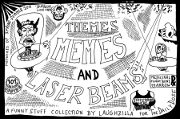
Supermassive objects such as black holes and neutron stars warp spacetime around them, and interactions between these bodies can result in the formation of gravitational waves, similar to ripples in a pond. However, these waves, postulated more than 100 years ago, cannot be seen directly like light or radio waves. Now, a new study by the North American Nanohertz Observatory for Gravitational Waves (NANOGrav) Physics Frontiers Center (PFC) has detected a low-frequency signal that might be gravitational waves. “We can’t yet say with confidence that what we’re seeing is gravitational waves, but if it is, the “signal” makes a lot of…
This story continues at The Next Web



